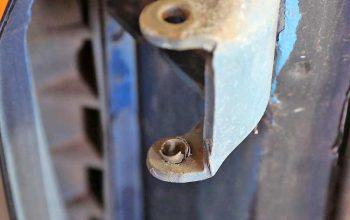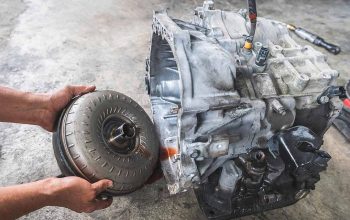An automatic transmission that goes into gear but won’t move can indicate a problem with the transmission fluid level or a malfunctioning torque converter. This issue can occur due to low fluid levels or a faulty pump, causing a lack of pressure.
It’s important to diagnose and address the issue promptly to avoid further damage to the transmission system. Having a car with an automatic transmission that goes into gear but refuses to move can be frustrating and concerning. More often than not, this issue can be indicative of an underlying problem with the transmission system.
While it may seem alarming, there are a few possible reasons for this behavior. It could be due to low transmission fluid levels, which can lead to insufficient hydraulic pressure required to engage the gears or a malfunctioning torque converter that fails to transfer power effectively. In either case, early diagnosis and intervention are crucial to prevent any further damage or expensive repairs.
Common Symptoms Of Automatic Transmission Issues
When the gear is engaged but the vehicle doesn’t move, it’s crucial to recognize the signs that indicate an automatic transmission problem. One common symptom is a lack of response when shifting into drive or reverse. Another indication is a delay in movement after selecting a gear.
Additionally, the engine may rev without any increase in speed, or there might be a noticeable slipping sensation while driving. Fluid leaks, strange noises, and a burning smell are also red flags of a transmission issue. It’s important not to ignore these warning signs, as they could lead to further damage and expensive repairs.
If you experience any of these symptoms, it’s best to consult a professional mechanic who specializes in automatic transmissions. Their expertise can help diagnose and fix the problem quickly and efficiently.
Potential Causes For Automatic Transmission Failure
Automatic transmission failure can be caused by various factors, including wear and tear of transmission components, issues with transmission fluid, problems with the torque converter, and malfunctioning sensors or solenoids. These components can experience deterioration over time, leading to difficulties in shifting gears and ultimately preventing the vehicle from moving.
Components such as clutches, bands, and gears can wear out and affect the transmission’s ability to engage and transmit power. Insufficient or contaminated transmission fluid can also hinder proper operation, resulting in slipping or delayed engagement. Problems with the torque converter, such as worn out needle bearings or a faulty lock-up clutch, can lead to transmission failure as well.
Lastly, malfunctioning sensors or solenoids can disrupt the transmission’s communication and cause issues with gear selection and shifting. It is important to diagnose and address these potential causes promptly to prevent further damage to the automatic transmission system.
Diagnostic Steps To Identify The Problem
When experiencing a situation where the automatic transmission goes into gear but refuses to move, there are several diagnostic steps you can take. Start by checking the transmission fluid level and condition, as low or dirty fluid can cause issues.
Inspect the linkage and shift cables to ensure they are properly connected and functioning. Utilize a diagnostic scanner to retrieve error codes, which can provide valuable insight into the problem. Lastly, conduct a thorough visual inspection of the transmission components to identify any signs of damage or wear.
By following these steps, you can pinpoint the underlying issue and take appropriate measures to get your vehicle back on the move.
Addressing Transmission Fluid Issues
Automatic transmission problems can be frustrating, especially when your car won’t move. One common culprit is transmission fluid issues. Regular maintenance of transmission fluid is crucial to ensure the smooth operation of your vehicle’s automatic transmission. It is recommended to perform a transmission flush and fluid change periodically.
This helps to remove any harmful contaminants and replenish the fluid’s lubricating properties. Additionally, it is important to check and top up transmission fluid levels regularly. Low fluid levels can cause the transmission not to engage properly, leading to gear slippage or even failure to move.
By following these maintenance steps, you can address transmission fluid issues and maintain the proper function of your automatic transmission.
Repair Options For Transmission Component Failure
Automatic transmission problems can be frustrating, especially when the gear engages but the vehicle won’t move. When faced with this issue, there are several repair options to consider. One solution is to replace worn-out clutches or bands, which could be causing the transmission to slip.
Another possibility is repairing or replacing the torque converter, which could be malfunctioning and preventing power transfer. If the transmission has extensive damage, rebuilding it may be necessary. However, for some cases, opting for a remanufactured transmission is a viable option.
These transmissions have been refurbished to meet original equipment specifications and can provide a cost-effective alternative. Regardless of the chosen repair option, addressing transmission component failure promptly is crucial to ensure the vehicle’s smooth operation.
Diagnostic Steps For Electrical And Sensor-Related Malfunctions
When your automatic transmission goes into gear but won’t move, there may be electrical or sensor-related malfunctions. Start by testing and replacing malfunctioning sensors. Check the solenoids to ensure they are operating properly. Additionally, inspect the wiring and connections for any damage that could be causing the issue.
Seeking Professional Help For Complex Issues
When facing complex issues with your automatic transmission that prevent it from moving, seeking professional help is crucial. While DIY solutions may be suitable for simple problems, more intricate issues require the expertise of a specialized transmission technician. These professionals possess the knowledge and skills necessary to accurately diagnose and repair complex transmission problems.
Additionally, consulting a professional technician allows you to explore warranty options for transmission repairs. By taking this route, you can ensure that your car’s transmission receives the proper care it needs, without risking further damage. Trusting the expertise of a specialized transmission technician is the best course of action for addressing complex transmission issues and ensuring the longevity of your vehicle.
Preventative Maintenance Tips For Automatic Transmissions
Preventative Maintenance Tips for Automatic Transmissions include following the manufacturer’s maintenance schedule. Regularly checking and servicing the transmission fluid and filter is crucial. It is also important to avoid excessive towing or heavy loads. Being aware of signs of transmission trouble and addressing them promptly can prevent further damage.
By taking these preventive measures, you can ensure that your automatic transmission functions smoothly and doesn’t encounter any issues. Proper maintenance is key to ensuring the longevity and performance of your automatic transmission. So, make sure to stay on top of maintenance tasks and be proactive in addressing any potential problems as soon as they arise.
By doing so, you can avoid a situation where your automatic transmission goes into gear but won’t move.

Credit: www.youtube.com
Frequently Asked Questions For Automatic Transmission Goes Into Gear But Won T Move
Why Won T My Automatic Car Move When I Put It In Drive Or Reverse?
Your automatic car may not move when you put it in drive or reverse due to transmission issues.
What Are 3 Common Signs Of Transmission Trouble?
Three common signs of transmission trouble include slipping gears, delayed engagement, and fluid leaks.
When I Put My Car In Gear Nothing Happens?
When your car’s gear doesn’t engage, it could indicate a problem with the transmission or clutch.
What Causes A Transmission To Suddenly Stop Working?
A sudden transmission failure can be caused by various factors such as fluid leaks, worn-out components, or electrical issues.
Conclusion
When your automatic transmission goes into gear but won’t move, it can be a frustrating and confusing experience. However, there are several potential causes and solutions to consider. First, ensure that your parking brake is disengaged and your transmission fluid levels are correct.
If those are not the issue, it may be a problem with the torque converter, valve body, or clutch components. In some cases, a simple transmission fluid flush or filter replacement may solve the problem. However, more serious issues may require the assistance of a trained professional.
Remember, regular maintenance and inspections can help prevent transmission problems. If you encounter this issue, it’s crucial to address it promptly and seek professional advice to avoid further damage and costly repairs. Don’t let a transmission issue hold you back—take action and get back on the road with confidence.



